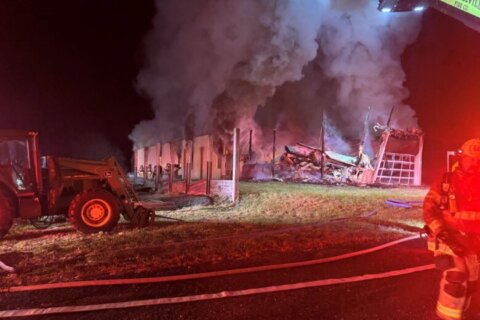It took Loudoun County, Virginia, more than a decade to desegregate its public schools after the U.S. Supreme Court ordered it, and the fight to keep Black students out of classes with white students didn’t stop there. On Friday, county and school officials issued an apology for those actions.
On Friday afternoon, the Loudoun County School Board and administration, and the Board of Supervisors, issued “An Apology to the Black Community of Loudoun County,” which detailed some of the ways county officials fought against desegregation in the 1950s and 1960s.
In 1954, the U.S. Supreme Court’s Brown v. Topeka Board of Education ordered American public schools to be integrated “with all deliberate speed.” Two years later, not only had that not happened yet in Loudoun County, but the apology details other active steps the county took to prevent desegregation:
- The school board and supervisors in January 1956 supported a constitutional amendment that Friday’s apology said would have effectively used private money to let white kids attend private school so they wouldn’t be learning alongside Black students.
- Also that month, the supervisors and the school board said that the Black schools, Douglass Elementary and Douglass High, should not be given money for improvements unless Black parents agreed that segregation was better for their children’s education.
- That summer, the supervisors passed a resolution to stop funding the public schools if they were integrated, a resolution that wasn’t rescinded until 1962.
- And, in the following September, the supervisors asked the county’s state delegate and senator to support a plan that would close any schools facing a federal desegregation order.
Finally, in 1963, a federal court ordered Loudoun County to comply with the Brown decision, and full integration came in time for the 1968-1969 school year, the apology read.
The apology detailed other long-standing inequities in Loudoun County schools, in areas such as discipline, college preparation, and support and development for teachers and staff.
It also recalled that a Black community group had to raise $4,000 to buy the land for Douglass High School in 1939, then sell it to the county for $1. Even with that, the apology said, parents and other Black groups had to raise the money for school furnishings themselves.
The school system also included a nearly 15-minute video that featured reactions to the apology from current Black students and educators.
“To have my school system accommodate for what I have to go through and to be able to acknowledge that and apologize for that, it makes things feel a little more safe,” said Christian Yohannes, a senior at Riverside High School in Leesburg.
“The apology sets the stage for new beginnings,” said Felecia Lewis, assistant principal at Lightridge High School. “It says, ‘I see you, I stand with you and you’re a valuable part of Loudoun County Public Schools.'”
Others explained how the apology was a small step toward a different future.
“The biggest hope is that you never have to apologize again,” said Leesburg Elementary School Principal Shawn Lacey. “Let’s allow the apology to serve as a true foundation for growth.”
Loudoun County Public Schools hopes their apology is “a valuable step” to be “followed by additional actions” in policy change with its Comprehensive Equity Plan and the Action Plan to Combat Systemic Racism.
“We must pursue a bold, yet methodical, path of continuous improvement driven by a strong sense of urgency,” the statement concluded.
Read the apology on the Loudoun County Public Schools’ website.
WTOP’s Ken Duffy contributed to this report.








